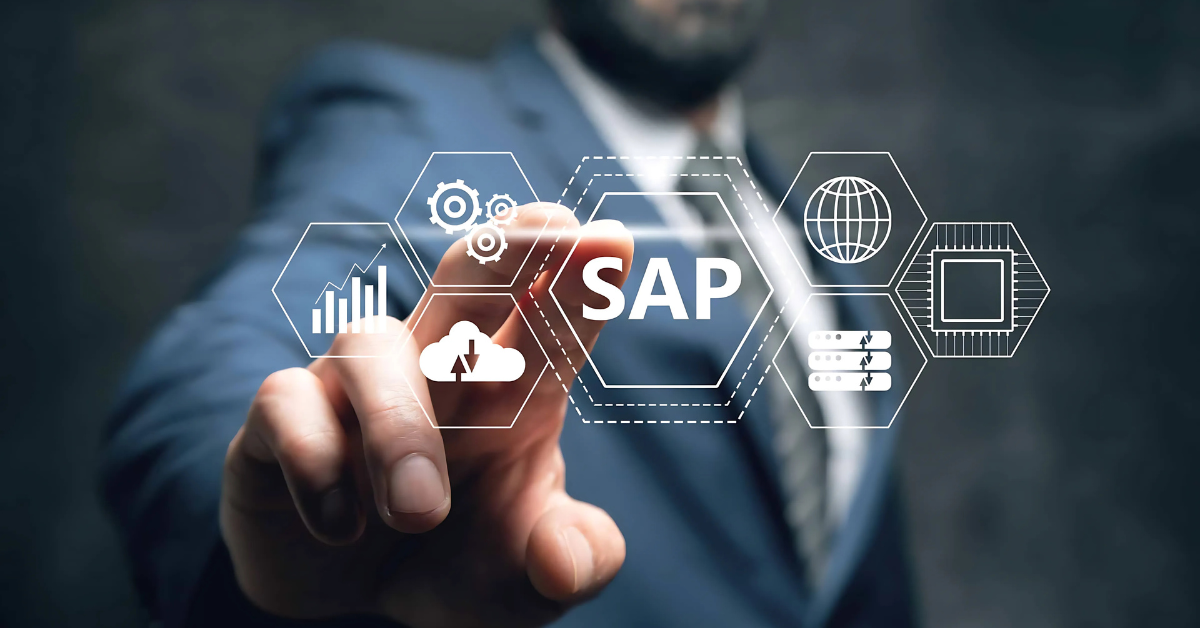SAP License Management and the SAM Program
All over the world, companies are realizing that they must employ the Software Asset Management (SAM) to ensure compliance, improve procurement and reduce costs. Popular desktop software vendors such as Microsoft, Adobe and Symantec agree and are already making it much easier to manage their software licenses through the SAM lifecycle.
But what about SAP? Companies running SAP are now looking to SAM to help them better manage their usage and costs. Starting with its dominance in Enterprise Resource Planning (ERP), SAP's growing application software offering is consuming an increasing share of the corporate IT budget. In fact, over the past decade, SAP customers have experienced double-digit increases in their annual costs through increased maintenance and licensing fees. Furthermore, in the last 10 years with Sarbanes-Oxley (SOX) and ISO/IEC 19770-1, IT and software asset management has become critically important. Since SAP deployments are complex, understanding and managing SAP contracts, deployments and license usage can be challenging.
But right now, it's absolutely essential. The reality is that SAM best practices can be applied to SAP license management. SAM professionals within companies, sam consultants and sap administrators need to understand the differences and challenges to achieve a successful outcome. The most important step is to use proper software tools specifically designed for the SAP environment, for discovery, measurement, compliance, optimization and retirement/recycling.
A successful SAM implementation offers a number of outstanding benefits:
- Accurate inventory: Through discovery and measurement, SAM provides an accurate assessment of the software inventory pool. Discovery detects actual licenses provisioned and forms a SAM baseline, while metering monitors actual usage patterns for licenses.
- more costs Low: SAM helps reduce enterprise software acquisition costs by maintaining accurate inventory and requirements assessment, which also provides greater leverage in contract negotiations and smarter purchasing than is really needed.
- Improved compliance: SAM helps limit and eliminate the legal risks of misuse of software and ensures compliance with indirect access requirements.
- Improved governance and risk management: SAM allows a company to determine what software is actually running — a critical part of assessing security, data integrity, and privacy risk.
- Proper retirement and asset recycling: By managing software assets throughout their lifecycle—including retirement on leave when an employee leaves and recycling licenses for reuse—companies can get a better return on their investment.
SAM best practices with vendors like Microsoft, Adobe, IBM, and Symantec are very popular. Most companies that have embraced SAM are working with consulting firms to ensure the right processes and programs are in place.
The International Standards Organization (ISO/IEC) published its first guidance on SAM in 2006 known as ISO/IEC 19770-1. It provides a process framework that allows companies to prove that they are implementing SAM to meet corporate governance requirements and ensure effective IT Service Management (ITSM) support. Today, ISO 19770-1 is a key building block of a SAM program within an enterprise.
While SAM is often seen as largely compliance-focused, the financial and business benefits it delivers through best practices can be dramatic. For example, it is possible for a large enterprise to release over US$ 10 million per year in SAP licensing acquisition and maintenance costs through a well-implemented SAM program combining powerful software tools and processes.
Obstacles specific to SAP contracts
For those who want to integrate SAP licenses with their Software Asset Management (SAM) best practices, there are challenges that must be overcome. Some consider this analogous to putting a square peg into a round hole. While it may not be as impossible as that, integrating SAP licenses into a SAM program must combine processes with powerful software tools to aid discovery, measurement, compliance, optimization, and retirement/recycling.
Several important SAP licensing considerations from a SAM perspective are:
- No support for Software Identification Tags (SWID TAGS): As a result, inventory control and management is more challenging. SWID Tags are part of the ISO/IEC 19770 standards (ISO/IEC 19770-2 and 19770-3) and supported by vendors such as Microsoft, Adobe and Symantec. With SAP, each license is associated with a named user that can be used to identify and manage that license throughout its lifecycle. Conventions and norms for the allocation of users and their names must be standardized. Discovery software is required to develop a SAM baseline of licenses that have been issued and deployed.
- Different types of license: License types such as Professional, Limited Professional, Developer, and Employee Self-Service do not have a clear delineation between them. As a result, assessing compliance is difficult and places companies at the mercy of SAP's annual audit process. User activity measurement software is required to ensure compliance and “best fit” of license types across actual usage patterns.
- Indirect Use Fees: A growing concern with SAP deployments, indirect usage rates are challenging to identify, assess and control. When third-party applications provide access to SAP data through the SAP application programming interface (API), an annual fee applies. It is critical for companies to track the activity level and financial exposure of these license overheads, which can come from B2B or mobile applications that are connecting to the backend SAP ERP system.
- The challenge of retiring and recycling SAP user licenses: When an employee leaves a company, that person's license remains in use, although it can be marked as “inactive” to prevent access to the system. Identifying duplicate, erroneous, and obsolete user licenses requires sophisticated software tools that automate what can be a cumbersome six-step process to recycle the license for future use.
- Acquisition: Due to all the aforementioned issues, efficient procurement is hampered due to the lack of connection between past contractual purchases, deployed licenses and actual license usage. Here again, the new generation of powerful discovery software tools can provide the solution.
The SAM Software Asset Management lifecycle
Software Asset Management, SAM, is a business practice that bundles software processes and tools together to manage the lifecycle of software applications across an enterprise — optimizing the purchase, deployment, maintenance, utilization, and retirement of software. The SAM lifecycle involves five distinct processes – Plan, Acquire, Deploy, Manage and Retire. For those who integrate SAP into their SAM process, the challenges are significant but not insurmountable.
To plan and purchase SAP licenses, the first step is to understand what is already contractually owned and what is actually being used. This requires collecting all SAP contracts from across the enterprise into a contract management system. There are powerful SaaS-based systems that can automatically capture both contracts and key information so that an enterprise can understand what it has contractually purchased.
Collecting and organizing contracts provides a holistic view of purchases, showing what is actually deployed and being used. Once contract terms, pricing, and actual usage are understood, then the acquire portion of the SAM lifecycle comes into play. Here, companies are best served by using contract benchmarking data and/or an experienced consulting firm that can negotiate with SAP on their behalf. Saving 50% off standard pricing is a good thing—unless the industry standard discount is 65%—or if you are buying licenses when you already have thousands that have not been properly retired and recycled.
The deployment phase of the SAM lifecycle follows standard best practices used with other enterprise software. Here are some SAP-specific issues to consider:
- Suitable license type for each SAP user: Make sure the license supports each user's features. Compliance must be balanced against licensing which can result in a 10X to 20X difference in price per license. Using powerful software, measuring exact usage is the best way to “right size” license type.
- Indirect use: It's a potentially explosive expense that must be understood and managed in the sam context. SAP usually has a very new provision in each of their contracts that says, “If a third-party application uses the SAP system to access data, then an indirect user license is required for each user.” This can apply to mobile, B2B and B2C e-commerce applications, as well as internal portals and even point-of-sale (POS) systems.
The management phase of an SAP deployment under SAM should involve ongoing monitoring of contract activity and usage activity to ensure the two are in balance. Using automated software tools, monthly self-audits of SAP license activity should be performed to better understand how the company will fare in a future vendor audit. Usage optimization should be performed to assess the potential for over-licensing of redundant, obsolete, and erroneous users. Measurement should occur to ensure both license type/function compliance and “right-sizing” of license types.
Finally, the Recycle/Recycle phase of the SAP SAM process is very important from both a financial and compliance perspective. It is not uncommon for up to 25% of all SAP licenses to be obsolete, duplicated, or erroneous. After utilization optimization, SAP administrators can use software tools to retire these licenses and recycle them for subsequent use. This will likely free up some acquisition costs for new SAP licenses, since the inventory on hand should reflect the available retired and recycled licenses.
SAP and SAM Licensing Discovery
Understanding which SAP licenses have been contractually purchased across a global company over several decades can be challenging. Deploying SAP systems across the enterprise can also be extremely complex and difficult to understand. Powerful discovery tools can be configured to look through dozens or hundreds of SAP systems within the enterprise, and create a coherent, unified and comprehensive inventory of licenses authorized for use within the SAP system. An aggregated summary can provide an initial snapshot that can be used as a basis for a SAM baseline. Typically, clicking on a certain value in a report will lead to a detailed exploded list of named sap users that can be viewed or exported.
A discovery tool should generate a comprehensive summary of what user licenses have been allocated on the SAP servers linked to your system. Figure 2 is an example of a report that provides a view of the change in named user licenses over the last 12 months, as well as changes in recycled SAP licenses. It is a non-trivial process that involves specific steps to retire a SAP named user license and then move it to a recycled license. As shown in the example below, there has been no change in the number of licenses recycled in the last 12 months, which likely means that the company is not using any automated techniques.
Using automated SAP discovery software can also be helpful in understanding the allocation of licenses by both SAP license types and by department or cost code. This more detailed summary information is essential during the SAM acquisition phase, where the company is fully aware of (a) what it has already contractually purchased, (b) which licenses have been deployed and are active, and (c) what is the actual usage profit for each license. Figure 3 is an example of a report that can be generated using a powerful SAP discovery tool.
SAP audits typically review but do not charge for license activity on test servers. However, there are often dozens of test servers that sit idle after development has moved into production a long time ago, making them candidates for cleanup.
Finally, a discovery tool can be very useful to provide a detailed view of system usage by all named and licensed SAP users. As an example, in Figure 4, 874 named users have not logged into the SAP system for over a year. These user licenses should be reviewed as they may be duplicate, erroneous or obsolete accounts.
Software Asset Management (SAM) is a discipline that combines processes and tools to ensure compliance, improve procurement, and reduce the Total Cost of Operation (TCO) of both license purchases and ongoing annual maintenance fees. SAP software is one of the biggest investments companies make, and yet it is rarely folded into the practice of SAM. This has historically been due to complexity, lack of vendor support, and inadequate software tools to assist SAM specialists. A next generation of software that provides SAP discovery, measurement, compliance and optimization is being adopted in the market by leading companies. This software, combined with associated processes, can quickly bring SAP software deployment into enterprise SAM practice.
In-company SAM professionals as well as SAM consulting expert practices must expand beyond their more traditional vendor work—Microsoft, Adobe, Symantec, Oracle—to address the SAP market. The potential benefits for large global companies are significant.
Tags: ServiceNow, Snow Software, Software Asset Management, Software Asset Management, SAM, FINOps, ITAM, ITSM, Flexera, Cloud Management, sap business, power bi, sap b1, saphana, project management, user types, sap ariba, logistics management, named users, sap products, sap ecc, free materials, annual audit, sap licensing, we use cookies, sales modules, annual maintenance, have this license, professional licenses, sap solutions, it professionals, limited licensing, sap data, business partners, sap licensing, s4 hana, enterprise management, license models, contact us, databases, access directly, subscribe to our newsletter, work with us, midsize companies, sap s4hana, sap licenses business, digital transformation, sap understand, indirect accesses, available licensing, reduce costs, erp systems, software licenses, types of sap licenses, sap erp.


